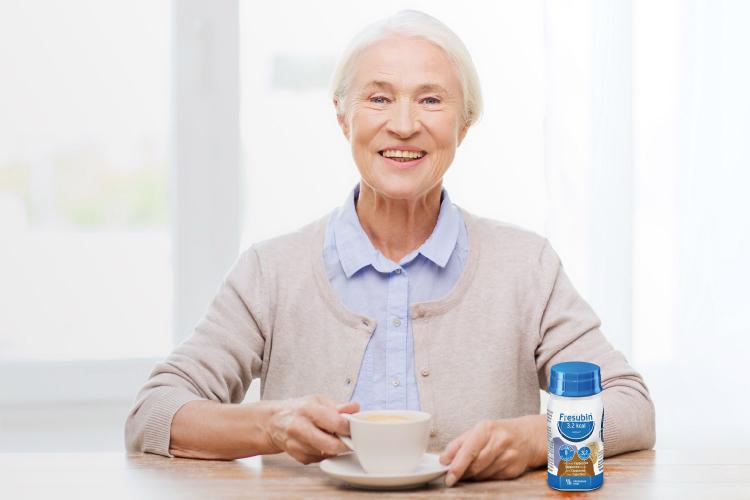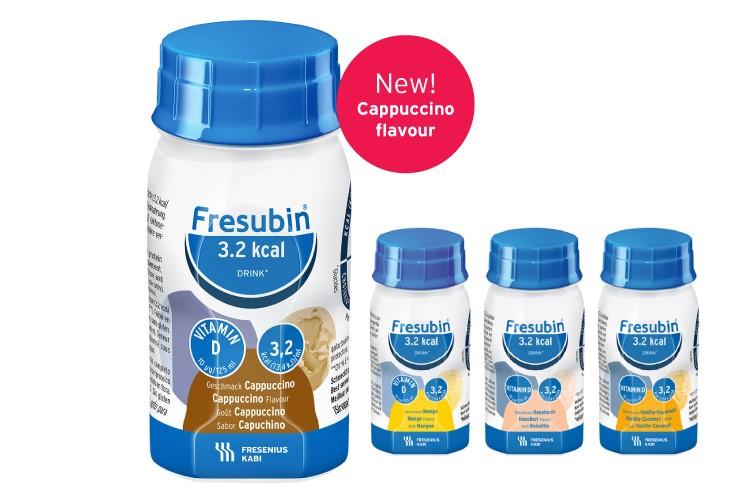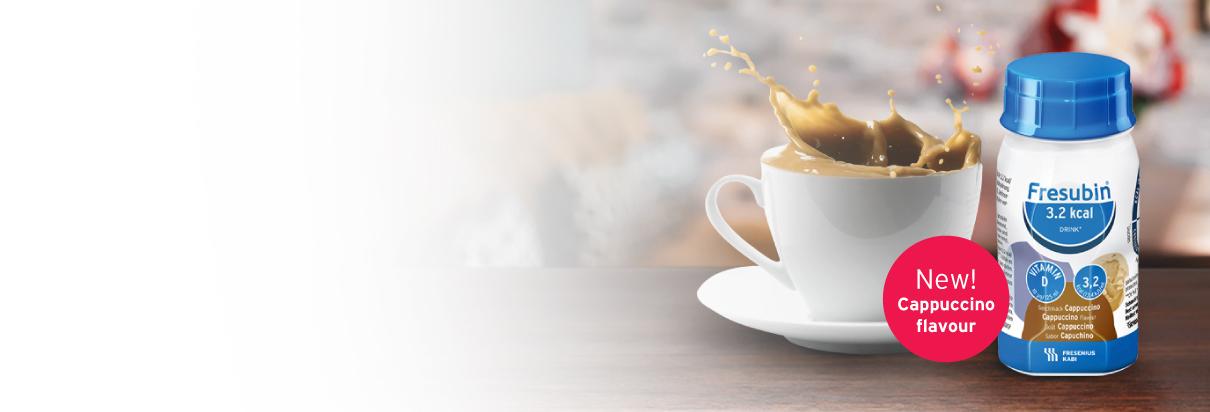Compact volume - Only 125ml!
Nutritionally complete
Oral Nutritional Supplement with high energy and protein density
Fresubin 3.2 kcal DRINK contributes to the success of the nutrition support not only with the low volume, but also with high palatability and good taste that help improve compliance.



Tastefully uplifting cappuccino flavour
A decrease in the senses of taste and smell due to old age or health conditions may increase the risk of malnutrition.9 Creating a more pleasant eating experience encourages a more balanced diet and improves the intake of nutrients.
When it comes to Oral Nutritional Supplements, being able to choose from different flavours is important to overcome taste fatigue and improve compliance.
Fresubin 3.2 kcal DRINK now offers four different flavours to suit individual preferences, creating an enhanced experience of taste, in combination with effective nutrition support.
Click to Watch Video
Fresubin 3.2 kcal DRINK is a food for special medical purposes, that has to be used under medical supervision
*In two studies conducted among older adults living in residental homes (n = 2 × 20) gastrointestinal tolerance, palatability and compliance was evaluated
References:
1) Milne AC, Potter J, Vivanti A. et al. Protein and energy supplementation in elderly people at risk from malnutrition. Cochrane Database Syst Rev. 2009;(2):CD003288.
2) Raynaud-Simon A, Revel-Delhom C, Hebuterne X. Clinical practice guidelines from the French Health High Authority: nutritional support strategy in protein-energy malnutrition in the elderly. Clin Nutr. 2011;30(3):312–319.
3) Yang et al. Resistance exercise enhances myofibrillar protein synthesis with graded intakes of whey protein in older men. British Journal of Nutrition. 2012; 108: 1780–1788.
4) Pennings B, Groen B, De Lange A et al. Amino acid absorption and subsequent muscle protein accretion following graded intakes of whey protein in elderly men. American Journal of Physiology - Endocrinology and Metabolism, 2012;302 (8):E992-E999.
5) Paddon-Jones D & Rasmussen BB. Dietary protein recommendations and the prevention of sarcopenia: Protein, amino acid metabolism and therapy. Curr Opin Clin Nutr Metab Care. 2009; 12(1): 86–90
6) Dent E, Morley JE, Cruz-Jentoft AJ, Woodhouse L, Rodriguez-Manas L, Fried LP, et al. Physical Frailty: ICFSR International Clinical Practice Guidelines for Identification and Management. J Nutr Health Aging. 2019;23(9):771-87.
7) Dent E, Lien C, Lim WS, Wong WC, Wong CH, Ng TP, et al. TheA sia-Pacific Clinical Practice Guidelines for the Management of Frailty. J Am Med Dir Assoc. 2017;18(7):564-75.
8) Morley JE, Vellas B, van Kan GA, Anker SD, Bauer JM, Bernabei R, et al. Frailty consensus: a call to action. J Am Med Dir Assoc. 2013;14(6):392-7.
9) http://www.mna-elderly.com/causes_of_malnutrition.html
